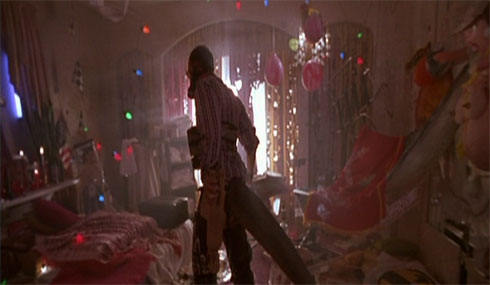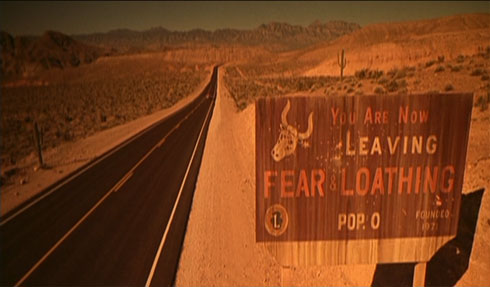Category: The Criterion Collection
My neverending quest to watch all of the Criterion Collection films.
A part of this viewing list: Criterion Collection Spine #175: Terry Gilliam’s Fear and Loathing in Las Vegas.

America is the first country to have gone from barbarism to decadence without the usual intervening period of civilization.
—Oscar Wilde
I’ve never used any sort of illegal drug, so offering an examination of the verisimilitude of Hunter S. Thompson’s and Terry Gilliam’s portrayal of drug-induced behavior isn’t going to happen. I also thought about writing this review as HST himself would have written it, but that would be [possibly] the worst thing I have ever written. Anyway. This film and book are about as American as they come. I’m not talking about a mythologized America, although that is present, or a nostalgized America [also present], but a subtle simulacrum of the actual American psyche. I’m going to talk about the film and the book interchangeably, since Gilliam’s presentation is generally spot on. They are about pursuing the American Dream and getting lost along the way, something that eventually happens to all of us. In the film, the American flag, in the hyperbolically American city of Las Vegas, literally litters most scenes. It is trampled, blanketed, torn and ignored for virtually the entire film, as the main characters go on their vision quest for the reality behind the symbol. Failing at that, they revel, albeit paranoically, in their drug-induced haze until, abruptly emerging into the glare of the desert, they are left with a feeling of satisfaction, despite not knowing how they’ve arrived at it. Count the commas.

He who makes a beast of himself
Gets rid of the pain
Of being a man.
—Dr. Johnson
The drug-driven self-reflective atavism becomes a rhythmic counterpoint to the ostensibly noble pursuit which Dr. Gonzo and Duke claim to be chasing. Yet even this itself is a very American situation. The pendulum between barbarism and decadence. When the film swings to the animal end it shows the more realistic aspects of Americana: violence, sex, rage and power. But here there are also moments of an almost primeval quiet, the quiet that Duke is constantly seeking and which seems to offer him continual epiphanies. At the famous “wave speech” Duke realizes that he’s not going to find/beat the American Dream though he is now far too committed to simply give up. Perhaps his manic glee at the end of the film is the result of his realization that although he didn’t beat the American Dream, he at least fought it to a draw.

And as serious as this review has been, the fact that this film and this book are comedies should not be neglected. In fact, the comedy is the icing on the cake in terms of the American-ness of the film. My mom would say that the film has a smart mouth, but the kind of lip it keeps giving is salty for a reason. Gilliam and Thompson knew they outcome was futile, so true to American form they cloak the deadly earnestness with a dismissive attitude. At some level we all feel that the truth lives with the barbarians and the ideals with the decadent; never shall the twain meet. Fear and Loathing is more ethnography than acid trip.

• Criterion Essay by J. Hoberman.
• Jacket copy for the book by Hunter S. Thompson.
• Fear Under The Microscope: A Comparison of the Terry Gilliam/Tony Grisoni and Alex Cox/Tod Davies screenplays for Fear and Loathing in Las Vegas.
• Gilliam Grisoni Screenplay.
• Tons of clips on YouTube.
• Lots of journalism on the film from the Las Vegas Sun.